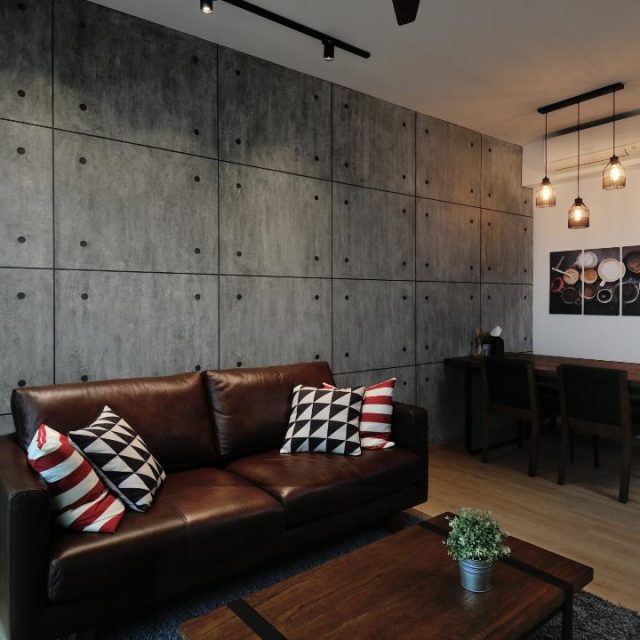How to get the feel-good factor with a contemporary interior design for corporate, home, and retail premise
The bottom line of a contemporary interior design for corporate, home, and retail premises is that it should make people feel good. When you start thinking about an interior design project for your home, office, or shop, the first aspect to consider is the sort of style you want to create that will produce a functional yet aesthetically-pleasing environment in which people feel at home with their surroundings.
The art of interior design lies not in cramming objets d’art and trendy knick-knacks into a room, but in affecting how people perceive spaces. As such, interior design is an essential, potent part of everyday life, influencing how we live and work. It’s responsible for our comfortable homes, functional workplaces, attractive shops, and delightful open spaces.
Interior design came into being as a profession in the U.S. in the early 1900s. What began as a process of utilising form and function in decorating has evolved into contemporary interior design as the art of organising attractive shapes and patterns into a cohesive configuration. Interior design continues to develop at a fast pace, embracing new technology while adhering to tried and trusted principles of the profession.
As with many characteristics of professionals at work, good interior designers make the job look easy – fashioning spaces that meet your needs while speaking to your emotions – but the fact is that a wide set of skills and a broad base of technical expertise is crucial to produce quality contemporary interior design. Today, interior designers work with specialists in many disciplines, including architects, contractors, engineers, lighting specialists, craftsmen, and furniture dealers, as they offer business and home owners the benefit of their expertise and experience.
Choosing a design style
The criteria on which you base your selection of a design style is, of course, entirely up to you, but a professional designer can provide indispensable guidance. In the home, particularly, most people want a design configuration that reflects their personality and lifestyle. You may want to express your individualism with bold, sweeping statements, or, if you’re more conservatively inclined, you might well opt for a more conventional approach.
With corporate interior design, it’s important that the design scheme, including office furniture, fits the company’s culture/image brand, while meeting the needs of staff; traffic-flow, aesthetics, and acoustics also need to be considered. If you’re planning a shop refit, a quality retail interior design can help to pull in patrons and encourage them to part with their cash.
There’re several types of style commonly used in interior design, including:
- Contemporary
- Modern minimalist style
- Maverick
- High-tech
- Retro
- Classic
- Classic reinterpreted style
- Rustic
- Elegant country style
You can find out more about these interior design styles at the blog DesignLike.
Appealing to all 5 senses
For an amateur attempting to come up with a contemporary interior design, it’s easy to immediately become immersed in the details (type of furniture, colour of paint, pattern of wallcovering, etc) while losing sight of the bigger picture: how to create a space that makes people feel good. To achieve this goal, you need a design that appeals to all 5 senses – sight, hearing, smell, touch, and taste.
Another common design error is failing to bring nature into the design. A simple addition like a house plant instantly connects with two of our senses: sight (looking at a plant has a calming effect) and smell (the aroma and freshness of a fragrant plant is invigorating).
Here are 5 other slip-ups that can be avoided by engaging the services of a professional interior designer:
- Failing to plan ahead. It’s imperative to pre-plan as much as possible in the initial stages of an interior design project. Whether you’re drafting a corporate interior design, residential interior design, or retail interior design, the more thought that goes into the scheme, the better the outcome will be.
- Positioning artwork too high. Many people seem to believe that artwork and framed photographs should be placed high on walls, but they look better when hung at around normal eye-level (the centre of the piece should be about 1.5m off the floor).
- Skimping on lighting. Set aside a realistic amount in your budget for a quality lighting system, and take your time when choosing light fixtures. A lighting installation designed and carried out by professionals will provide the finishing touch guaranteed to give any space the wow factor.
- Mismanaging your prized collections. Many people have collections of treasured possessions they want to show off in their home. Don’t scatter these pieces all around the place; they look much better when arranged in groups.
- Forgetting about the focal point. Every room should have a focal point towards which the eye is drawn, and larger spaces can easily incorporate more than one focal point. Define a purpose or focus for the room, then position furniture around it.
How to get it right
If your residential interior design gives you the feel-good factor, it’ll have the same effect on would-be buyers should you decide to sell your home, potentially increasing the value of your property. Bearing that in mind, now that we’ve looked at what not to do in an interior design project, let’s examine what you should do.
- Use a cohesive design thread throughout the project. Design elements such as pattern and colour can be fused together (not forgetting balance, harmony, scale, and proportion) to create one cohesive design thread that will generate a sense of calm and flow.
- Create some structure. Use furnishings, artwork, and curtains or blinds to create different heights in the room. Linda Floyd, a member of the American Society of Interior Designers (ASID), says: “When you enter a room, it should be like a cityscape – a combination of different heights. You never want everything in the room to be at the same level.”
- Get the scale and balance right. Too many bulky items in a room make it look small; too many small items, and it looks cluttered. The key is to strike a balance, and this is where a professional interior designer can offer invaluable advice on scale and proportion.
- Add some character. Instead of buying everything all at once and placing too much emphasis on matching up the design elements of a room, be patient and think of your interior design scheme as a work in progress. Gradually add items that appeal to you, and, over time, you’ll have a home brimming with character and mirroring your personality (see below).
- Get personal. It’s time to be selfish; your home should be all about you, a diary of your life and loves. Incorporate items such as photographs and mementoes into your residential interior design to create an inviting oasis to welcome you home at the end of the day, and present an intriguing tale to your visitors.
ENGAGING AN INTERIOR DESIGNER
Interior Designers are trained to take space, budgets, and the client – designer relationship into consideration when working on a decorating project. Designers should be flexible and diligent in applying the customer’s goals in a reasonable approach.
Hiring anyone to bring your desires or taste out to be physically seen by people can be scary. Hoping what you aspired for will come out visually. Interior designers are not just trained in color, pattern or light distribution. They are trained to see what you don’t see and to make your thoughts come to focus.
At Renovation Review Portal, we shortlist the best of the 5000 interior design firms in the market. Take a look at above:



